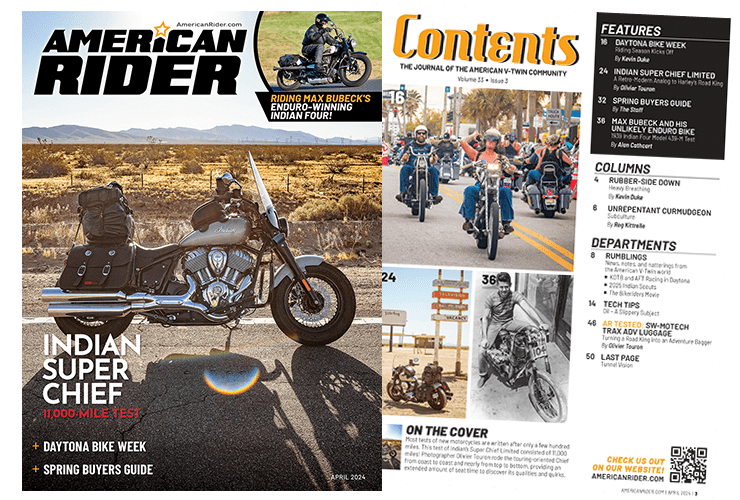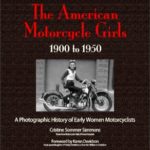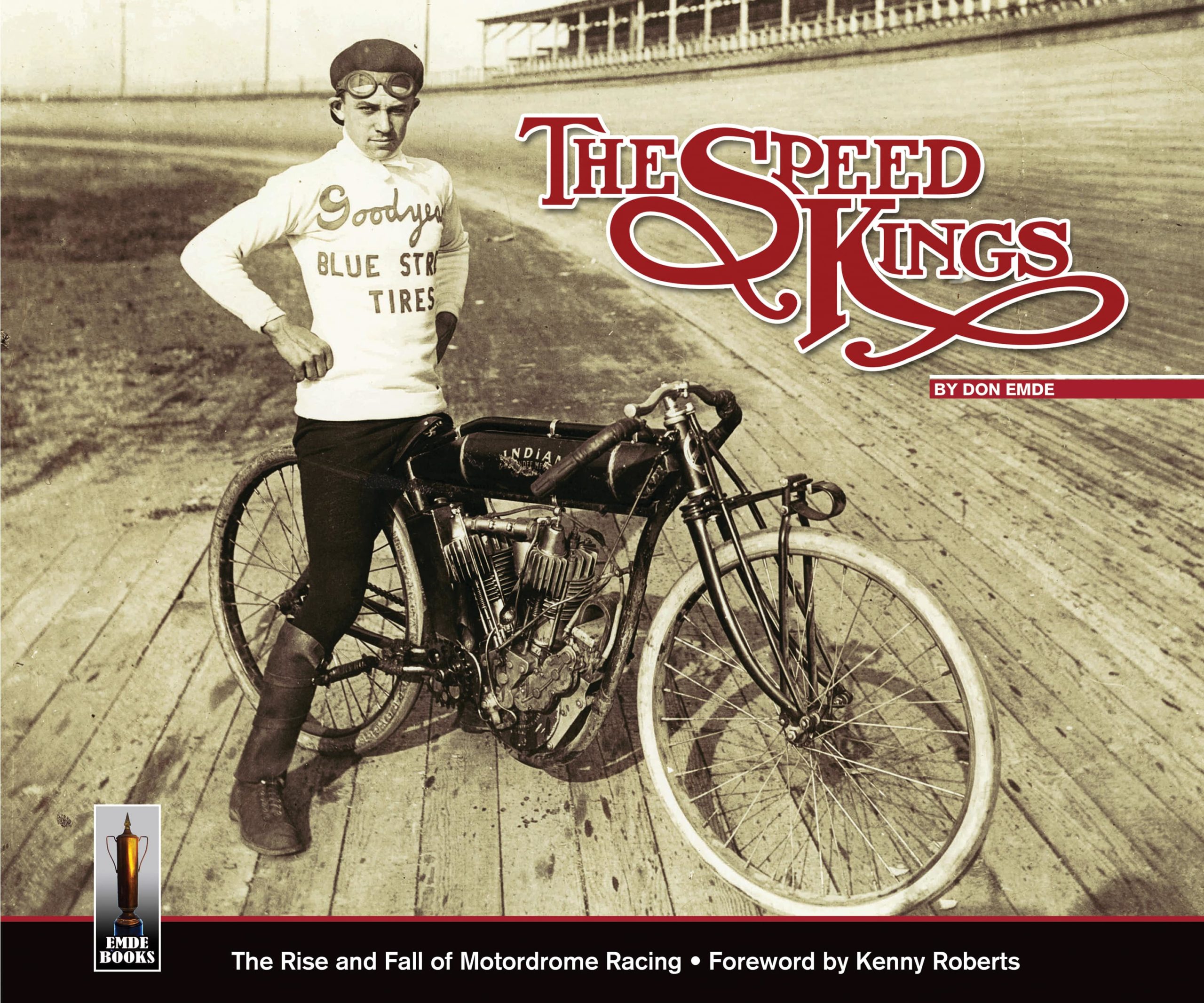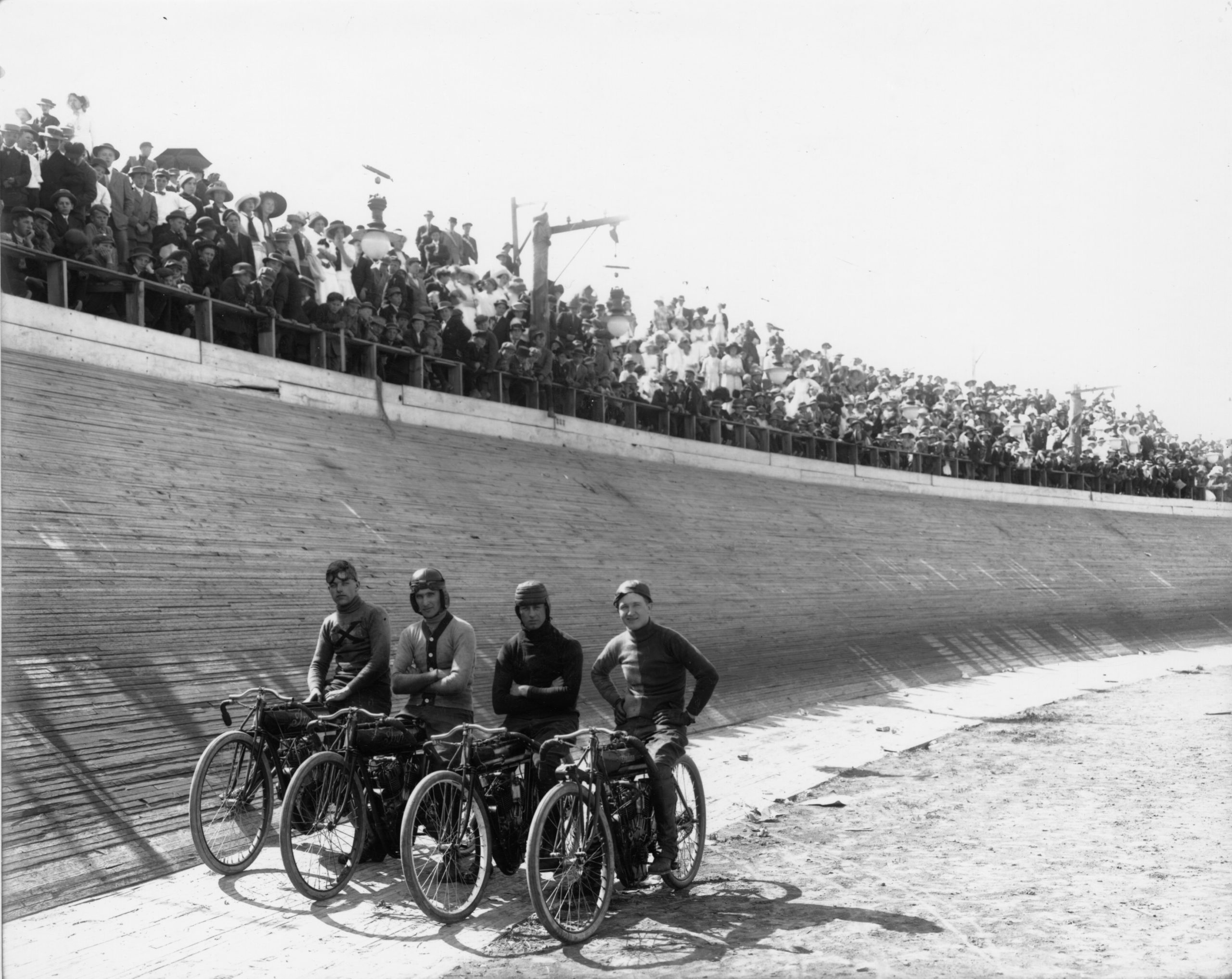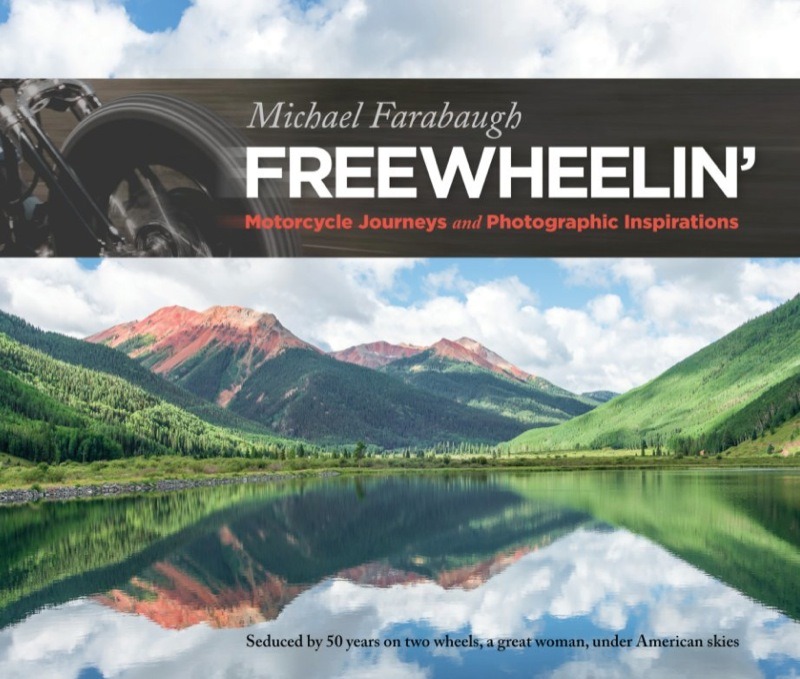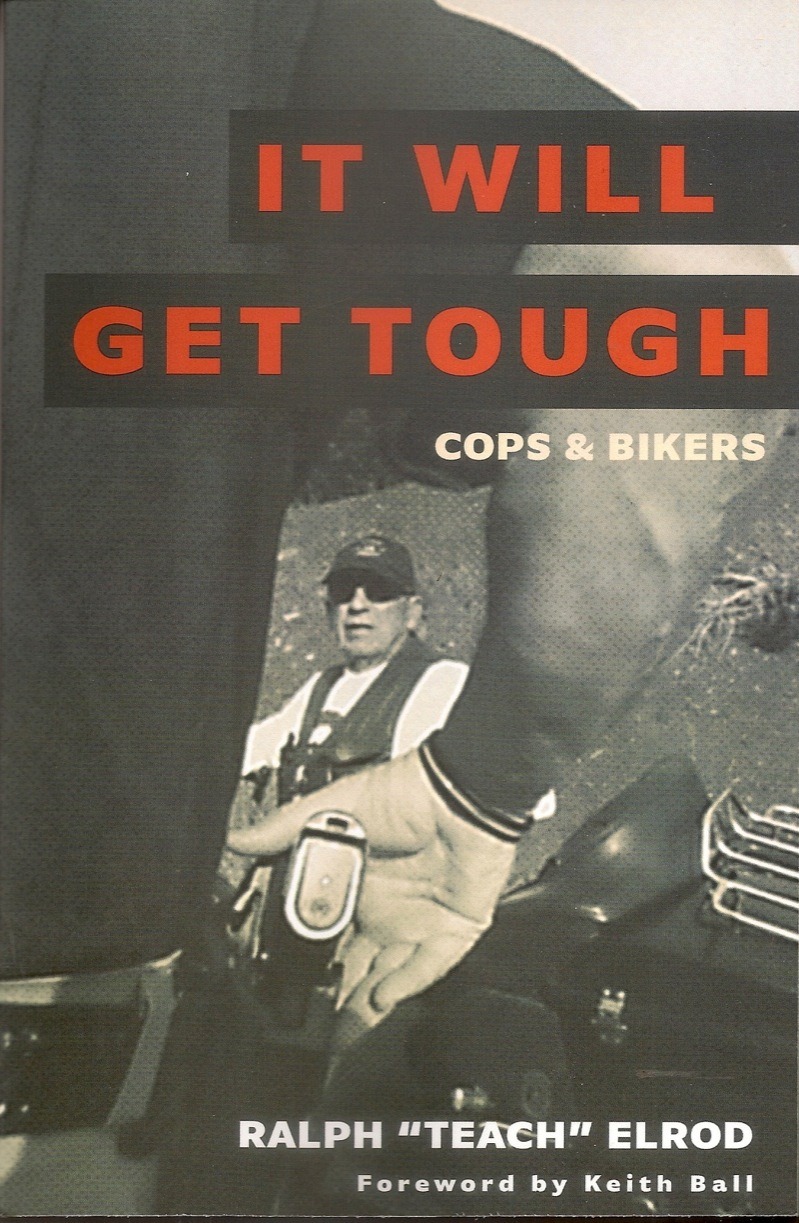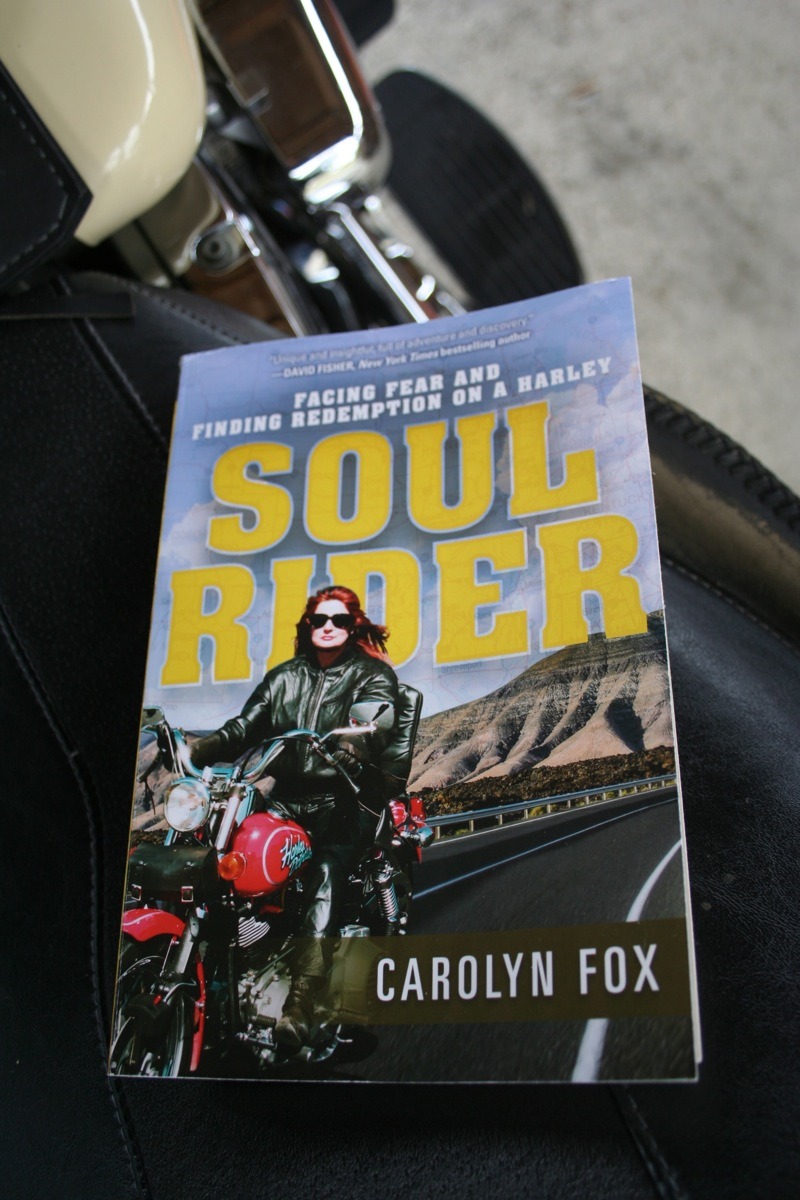A book of firsts
by Cristine Sommer Simmons
Parker House, $50, 240 pages
The subtitle of Cris Sommer Simmons’ book The American Motorcycle Girls: 1900 to 1950 describes it as “A Photographic History of Early Women Motorcyclists.” Although it’s a beautifully bound book that would look lovely gracing your coffee table, it is so much more than that. It’s a spectacular collection of rare photos, newspaper clippings, ads, postcards and other printed materials accompanied by historical and biographical information punctuated by poignant and sometimes humorous anecdotes. But even more importantly, it’s a book of firsts.
For instance, the first motorcycle designed specifically for a woman was made 100 years ago, only a few years after Indian Motorcycles and Harley-Davidson manufactured their first models. And Clara Wagner, the owner of that motorcycle, was the first woman issued a membership in the Federation of American Motorcyclists, the first organized motorcycle club in America.
The book details numerous other firsts achieved by these remarkable women, such as the first females (sisters Augusta and Adeline Van Buren) to ride cross-country, the first woman used in a motorcycle-related ad campaign, the first female trick and stunt riders, the first female motorcycle couriers and dispatch riders, and the first female motorcycle dealer. Actually, every woman featured was a pioneer in her own way—even Cy Woodman, the New York City newspaper reporter and the first woman attempting (but failing) to ride solo across the country.
The amenities we take for granted were not readily available in the early days of motorcycling. Most local roads weren’t paved at all. Gas stations were few and far between. Motorcycle repair shops were nearly nonexistent in the early 1900s, so many women had to learn to fix their own bikes wherever they broke down. And none of the high-tech riding gear we use today was available then, leaving riders at the mercy of the elements. Riders would often pack just a bedroll, a toothbrush and maybe a change of clothes for trips that took them thousands of miles. Some of these women rode 500 or 600 miles per day, making their accomplishments under these adverse conditions even more astonishing.
Women in the first half of the 20th century were expected to dress fashionably and conservatively, stay neat and clean, and above all, remain ladylike. One of the few concessions to women who piloted two-wheeled vehicles was the introduction of the shorter skirt—for practical reasons, so that the hem didn’t get caught up in the wheels. The women who pushed the envelope were not always accepted, though. Cris tells me that the Van Buren sisters, during their historic cross-country ride in 1916, were ticketed somewhere in the Midwest for wearing pants. And in the book is the story of the aforementioned Clara Wagner who finished first—and with a perfect score—in a 365-mile endurance run, but was denied the trophy because she was a woman.
That said, except for some isolated instances such as these, Cris maintains that her research showed that early women riders weren’t really treated that much differently than men. It wasn’t until after World War II that the media started portraying male motorcyclists as bad boys and women as sex symbols and “jewelry” for the back of the bike.
Some of the women featured in The American Motorcycle Girls: 1900 to 1950, such as Bessie Stringfield, Dot Robinson and Vivian Bales, were quite famous and have been honored by inductions into motorcycle halls of fame and immortalized in print or on film. However, a number of women in the book were relatively unknown; in fact, some photos even pictured unidentified women, but Cris made sure they got equal billing. The book isn’t about fame or fortune or lineage; rather, it’s about these women who shared a common trait—an irrepressible sense of adventure.
When asked why she wrote the book and how long it took to come to fruition, Chris explained, “I wanted to do a book like this for many years. I had a file folder full of names, ideas, photos saved. I thought it would be a shame to keep them to myself and I really wanted these women to be remembered for their accomplishments.
“Then one day my kids were all in college and decided I had time to put into a huge project like this. It took me about two and half years to really put it all together. I got in touch with families of some of the women. Meeting them in person has been a thrill for me (eight of these women are still with us!). I’m in the process of filming them for a documentary.”
Cris is also a woman of firsts. She was the co-founder of Harley Women, the world’s first motorcycle magazine for women. And she is currently the only American woman registered to ride in the 3,320-mile transcontinental Motorcycle Cannonball that will take place in September.
Between conducting interviews for her documentary, helping with a women’s exhibit at the National Motorcycle Museum, and getting her 1915 Harley in running order for the Motorcycle Cannonball, Cris is pretty busy nowadays. Will we see a sequel, possibly featuring women motorcyclists in the second half of the 20th century? Cris only responds, “You never know!”

